Best mirrorless cameras in 2021
Looking to buy one of the best mirrorless cameras? Then you’ve got some tough choices ahead of you, because there have never been so many great options.
Mirrorless cameras have come a long way in the past decade, and now rival — and often beat — the best DSLR cameras in most regards. They’re usually a lot smaller and lighter, too, and increasingly have features you won’t find on many DSLRs, such as in-body stabilization and super-fast electronic shutters. You can find out more about the differences in our mirrorless vs DSLR guide.
With camera makers increasingly turning away from DSLRs and towards mirrorless, there are more great cameras to choose from than ever before. Which one you go for will depend on many factors, not least price — the cheapest models in our list cost less than $600, the most expensive around $2000 (and you could even spend a lot more than that).
You should also consider whether you want full-frame, APSC or Micro Four-Thirds sensor and which lens system you want to buy into. But whichever camera you go for, you’re sure to be happy, because every model in our best mirrorless cameras list comes highly recommended.
What are the best mirrorless cameras?
After testing dozens of models, we think the best mirrorless camera for most consumers is the Sony Alpha a6100. This camera costs around $850 with a lens, takes great photos in low light, has a fast autofocus system, and can record video in 4K. The a6100 has a similar design to other cameras in Sony’s mirrorless camera lineup, which means a compact design that’s easy to hold, a nice large touchscreen, and an electronic viewfinder.
If you’re just breaking into photography, the best mirrorless camera for beginners is the Sony a6000. The original camera in the lineup, the a6000 costs less than $600 with a lens, yet shoots at a fast 11 fps, and takes great pictures in all conditions. This camera lacks a touchscreen, and it can only shoot video up to 1080p, but these are fine compromises at this price.
Having trouble deciding which Sony mirrorless camera is right for you? Check out our best Sony mirrorless cameras page.
Canon, Fujifilm, Nikon, Olympus, Panasonic, and Sony have all released software that allows you to use certain of their cameras as webcams. For more information, including compatible cameras, check out our guide on how to use your camera as a webcam.
The best mirrorless cameras you can buy today
We think most consumers will find the Sony a6100 to be the best mirrorless camera for their needs. Selling for around $700 with a kit lens, it’s not overly expensive, but has many of the modern features you’ll want, including an excellent autofocus system, a fast 11fps shooting speed, a bright electronic viewfinder, and sharp 4K video. (The camera even has a microphone jack for better audio.) Plus, the a6100 has an excellent design with a good hand grip, as well as an articulating 3-inch touchscreen, which makes it easy to hold the camera above or below eye level and still get the shot you want.
What you don’t get at this price are features such as in-body image stabilization, and the A6100’s viewfinder is a lower resolution than higher-end models. But these tradeoffs are more than acceptable.
Read our full Sony a6100 review.
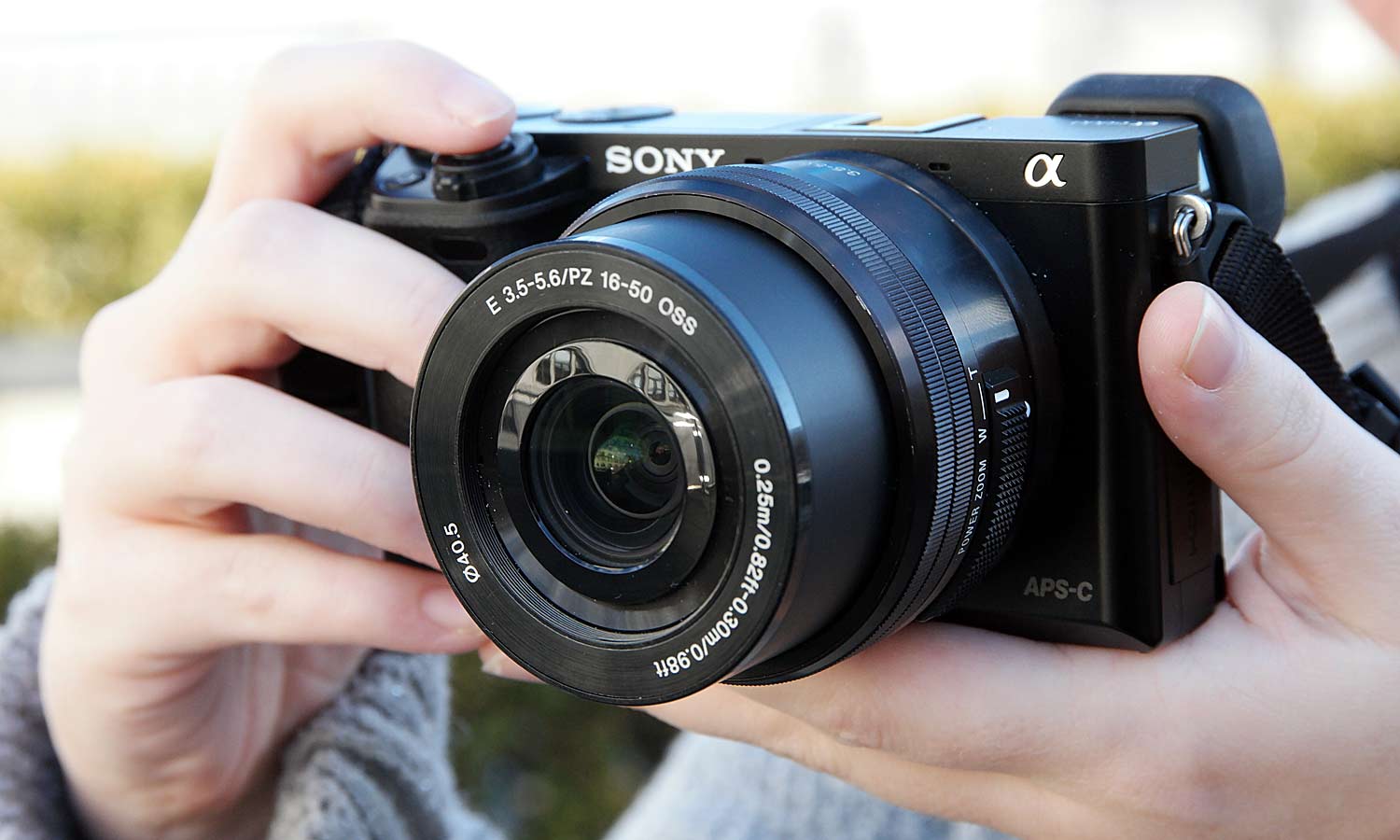
The Sony a6000 is the best mirrorless camera for beginners, in that it’s an ideal compromise between power and portability. Its autofocus is as good as a DSLRs, and it shoots at a blistering 11 frames per second with continuous autofocus and metering. Electronic viewfinders are a weak point on many mirrorless models, but the a6000’s OLED eyepiece is bright and crystal-clear, and doesn’t suffer from the stuttering you’ll sometimes find on EVFs with lower refresh rates. A DSLR shooter would be comfortable moving over to this eyepiece.
The a6000 shines in low light, and features the ability to capture clean images up to ISO 1600 sensitivity and usable shots in very dim conditions way up to ISO 12,800. On top of that, the a6000 shoots gorgeous full-HD video at up to 60 fps, as well as 24 fps for a cinema look. Clips show fine detail, rich color and buttery-smooth motion rendering, even in low light.
Read our full Sony a6000 review.
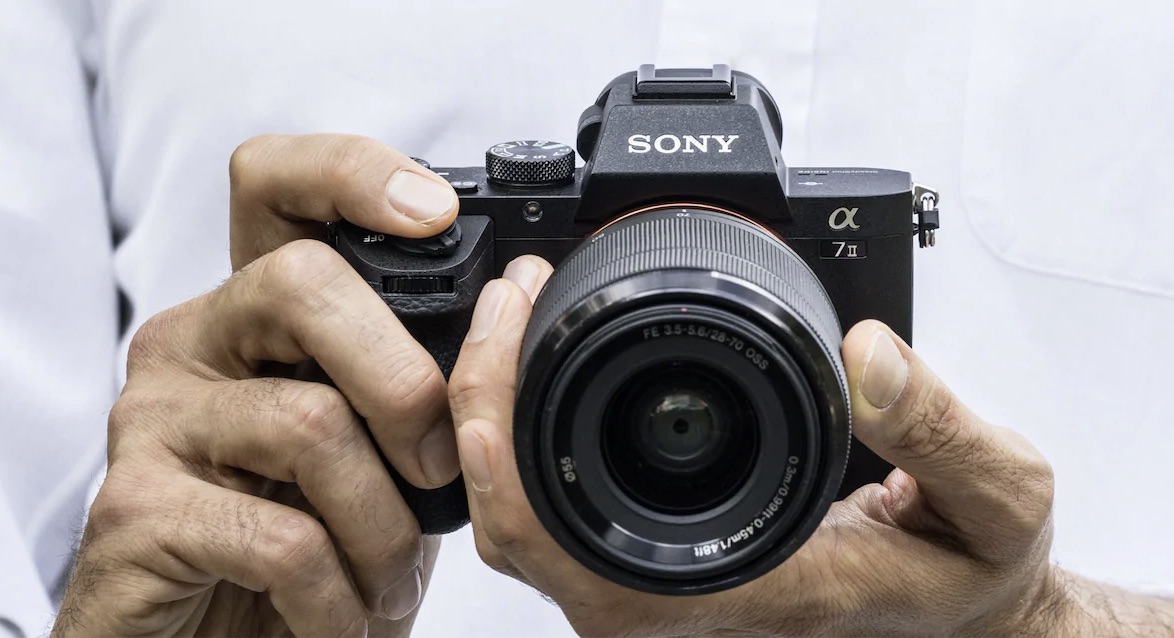
It’s the world’s first full-frame mirrorless camera to carry in-body 5-axis image stabilization, but there’s more to the Sony a7 II than just steady shooting. This petite, sexy camera fits in most bags, and packs a bunch of customizable buttons and knobs for quick access to your favorite controls. We also loved the bright, clear pictures and relatively low amount of noise (graininess) even at high ISO light sensitivity levels. Thanks to effective wireless capability, you’ll be able to beam your shots to your smartphone or computer within seconds.
The Sony a7 II is a few years old at this point — it’s been succeeded by the Sony a7 III, which offers full frame HDR 4K video and better battery life, to name a few things. But the a7 II is still a powerful camera, and it’s a lot cheaper than the new model, making it a better bargain.
Read our full Sony A7 II review.
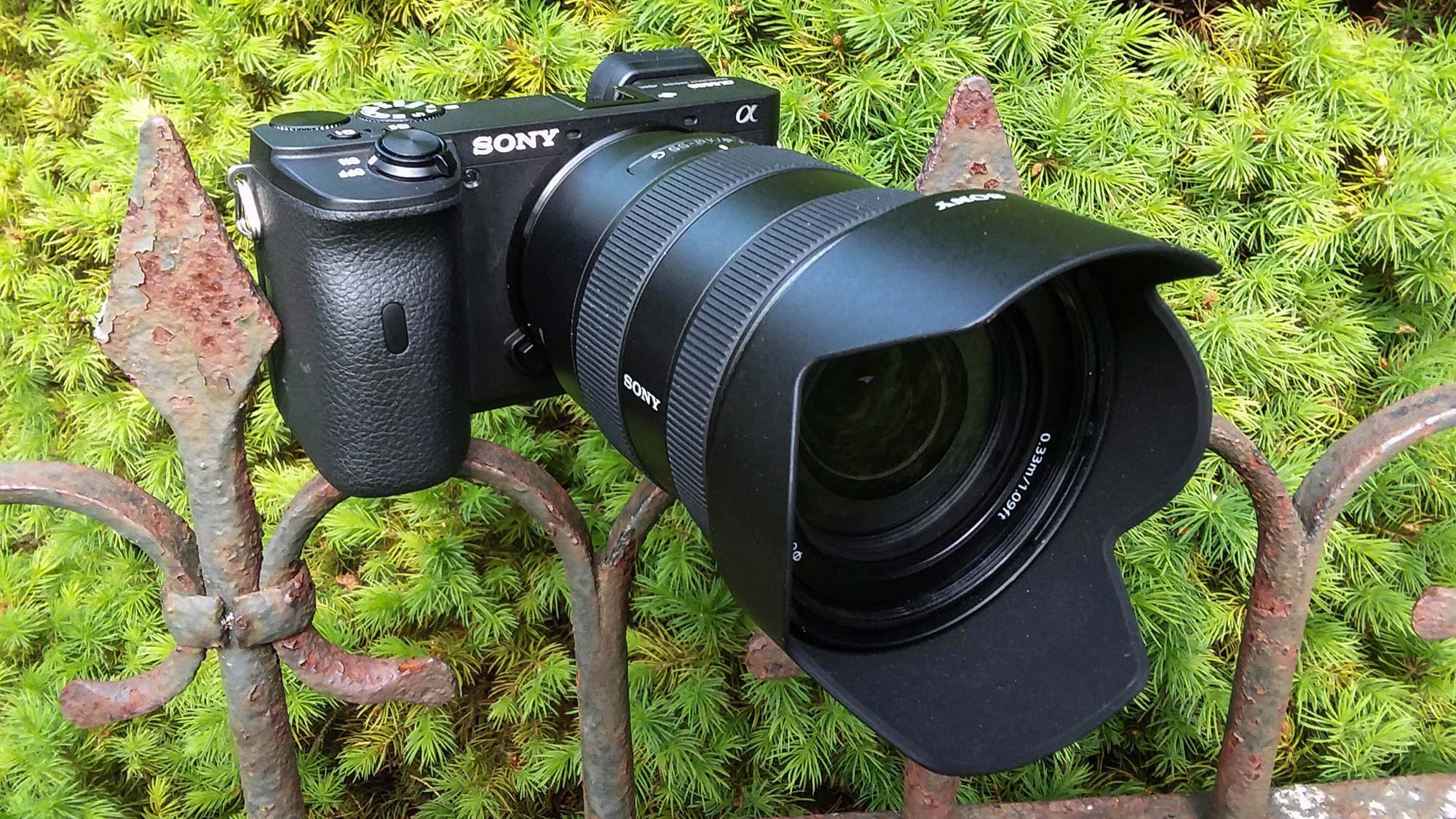
The Sony Alpha a6600 is the successor to the older, but still great a6500, and brings with it such features as 5-axis in-body image stabilization, 4K video recording at 60 frames per second, and a compact but sturdy magnesium-alloy body that’s protected against dust and mist.
The a6600 has the same 24.2-MP sensor as its predecessor, but now, with a faster processor, it has a wider ISO range (100-32,000), and AI-enabled eye autofocusing in both still and video. And, the a6600’s rated battery life of 720 shots is double that of the a6500; while we still recommend you pick up a spare battery, it’s good to know the a6600’s will hold out for a lot longer.
Read our full Sony Alpha a6600 review.
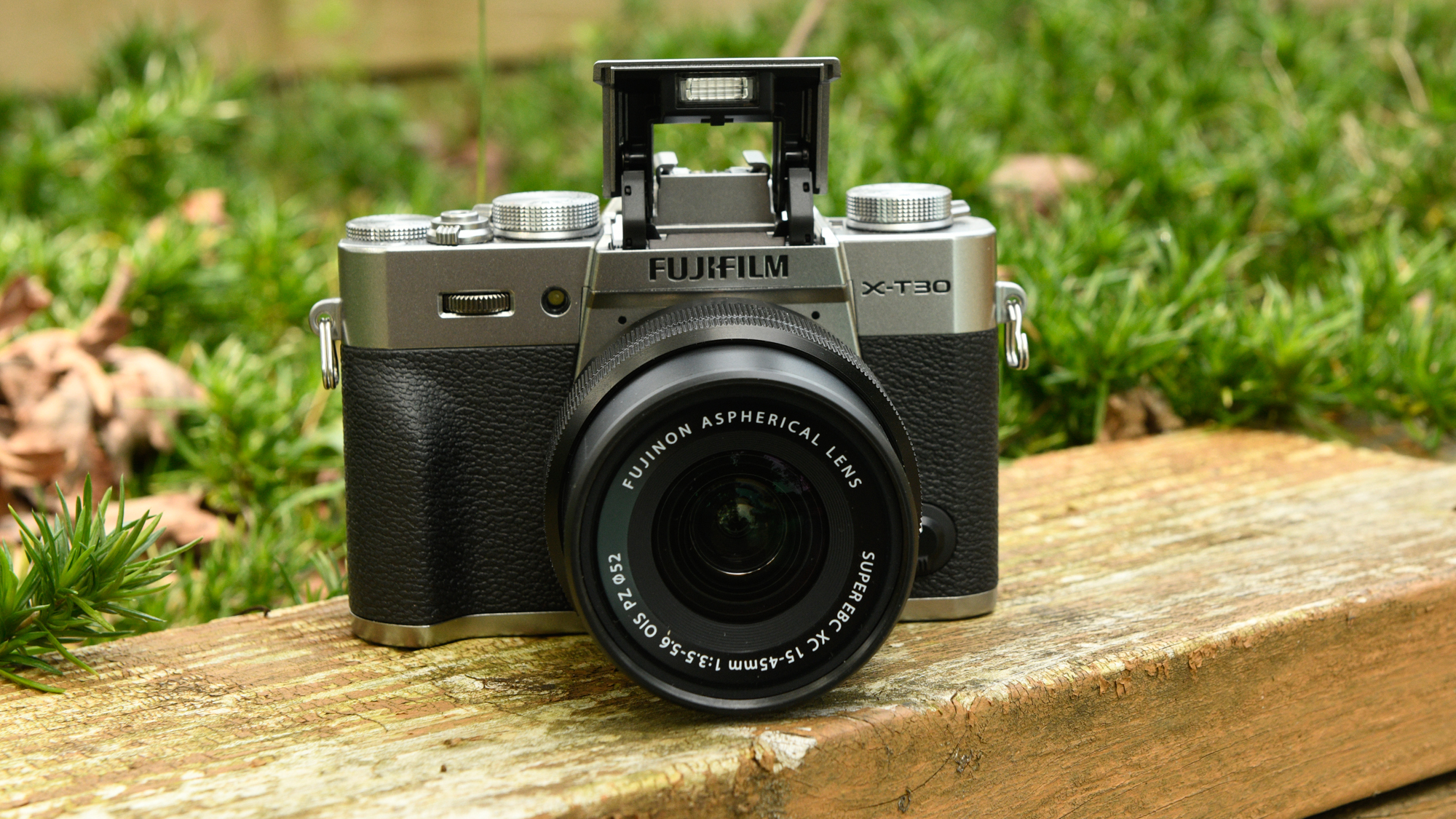
The Fujifilm X-T30 makes it on the list of the best mirrorless cameras because it has many of the features as the more expensive X-T3, but costs less than $1,000. It’s got a great retro look with a ton of dials, but still has modern touches, such as its articulating touchscreen.
The X-T30 takes fantastic pictures in a wide variety of lighting settings, and there are an abundance of settings and artistic filters to get more out of your photos. It has a fast processor that allows you to take DCI 4K video at 30 fps. However, you’re limited to 10-minute clips, so those who plan to shoot video should check out the Sony a6600 instead.
Read our full Fujifilm X-T30 review.
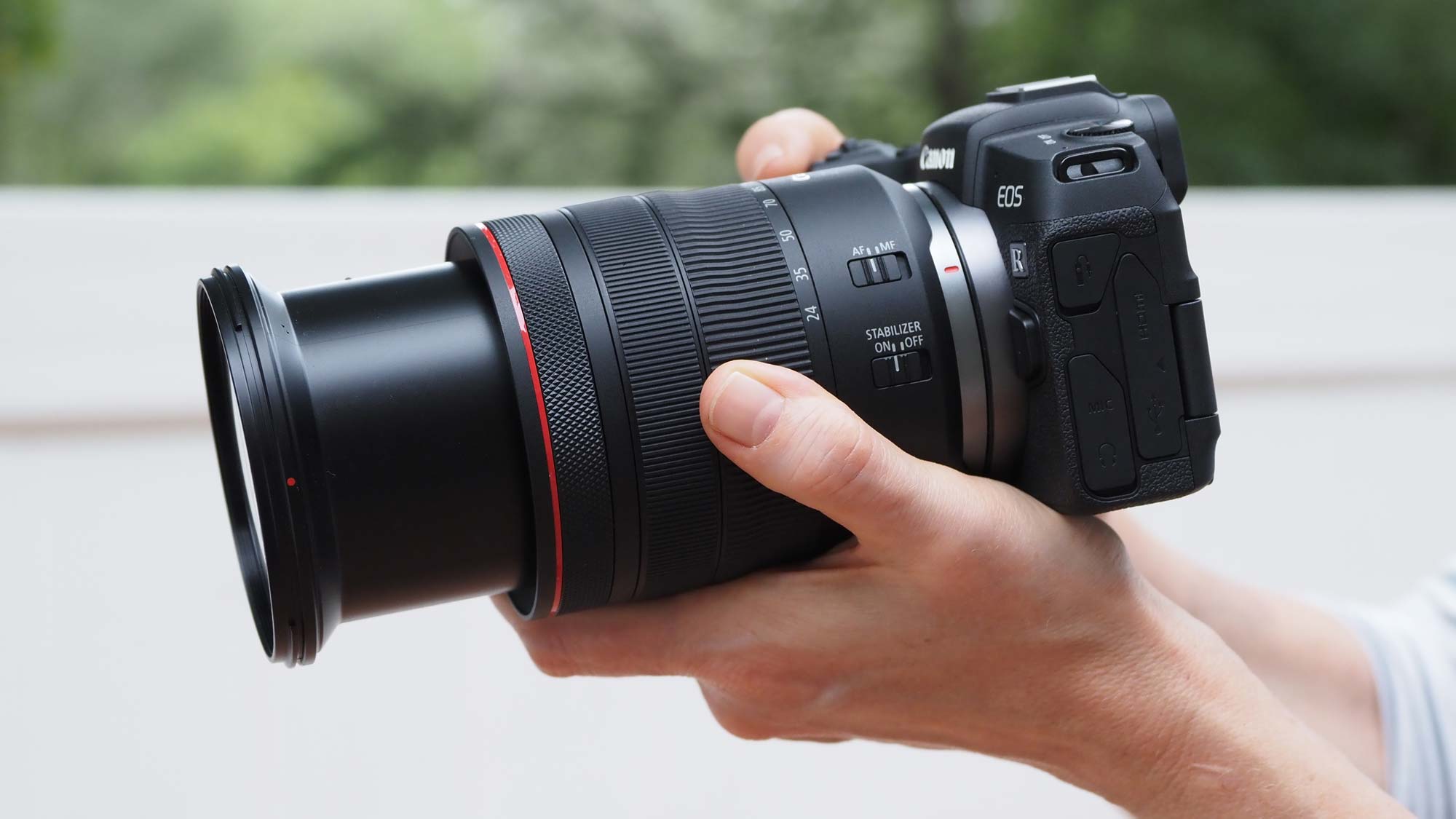
Until recently, most full-frame mirrorless cameras cost at least $2,000 just for the camera body. The Canon EOS RP is part of a trend of less-expensive models, bringing higher image quality at a lower price. The EOS RP has a 26 megapixel sensor, user-friendly controls, a fully articulated touch screen, and a compact body, all for less than $1,000. Not surprisingly for Canon, the EOS RP also takes great pictures, and can shoot video at resolutions up to 4K.
However, there are some compromises: The EOS RP lacks in-body image stabilization, it has a comparatively short battery life, and a slower shooting speed than other mirrorless cameras. Also, because Canon is relatively new to mirrorless cameras, there are fewer lenses available when compared to models from Sony.
Read our full Canon EOS RP review.
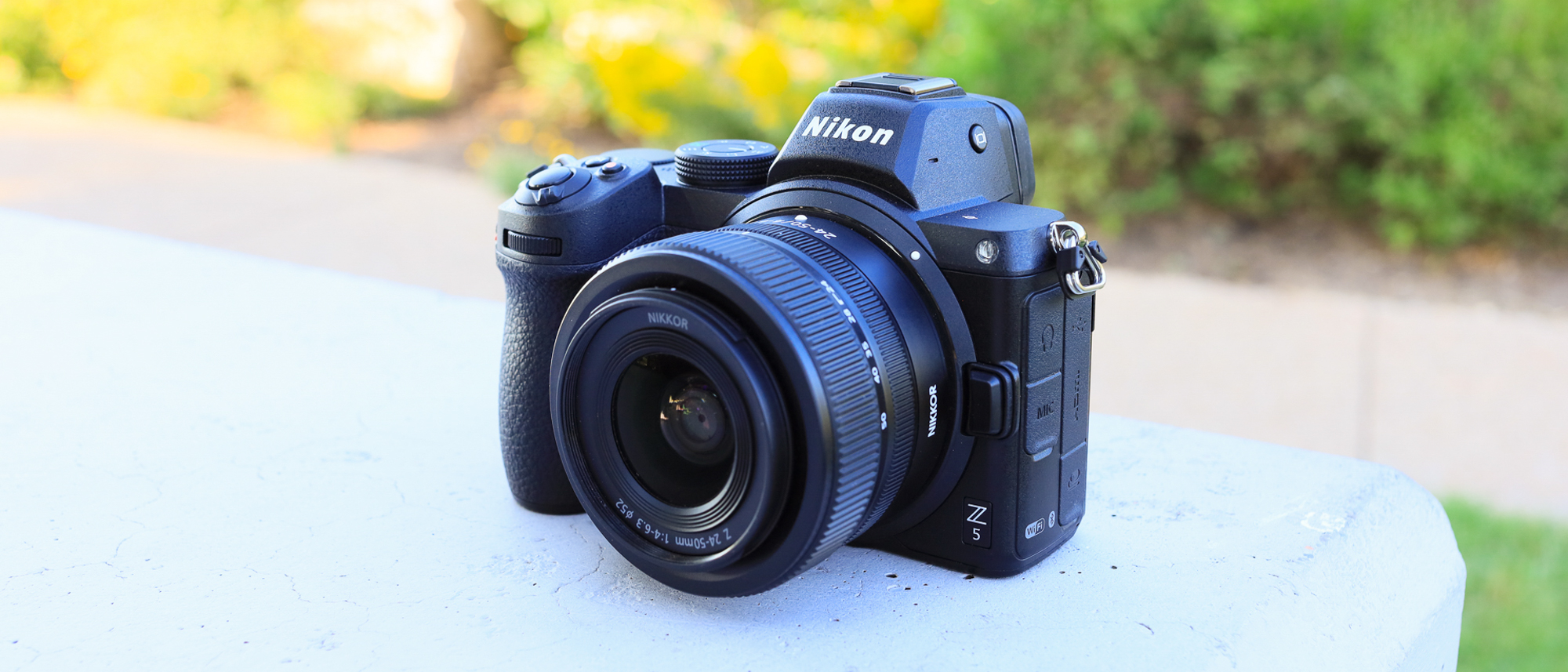
The Nikon Z5 is an excellent midrange mirrorless camera with a full-frame sensor, letting you get large and luscious images. Though larger than the Canon EOS RP, we liked the way it handled, allowing us to keep a firm grip. It’s weather-sealed against the elements, too.
The Z5 took excellent pictures in low light, thanks to in-body image stabilization and an ISO range up to 51200. It can shoot 4K Ultra HD/30p video, but the image is cropped, but the camera has a mic and a headphone jack. Last, the 3.2-inch touchscreen is large and bright, but only tilts up and down, and not to the side. Overall, though, this is a great option for those who don’t want to spend more than $1,500 on a full-frame mirrorless camera.
Read our full Nikon Z5 review.
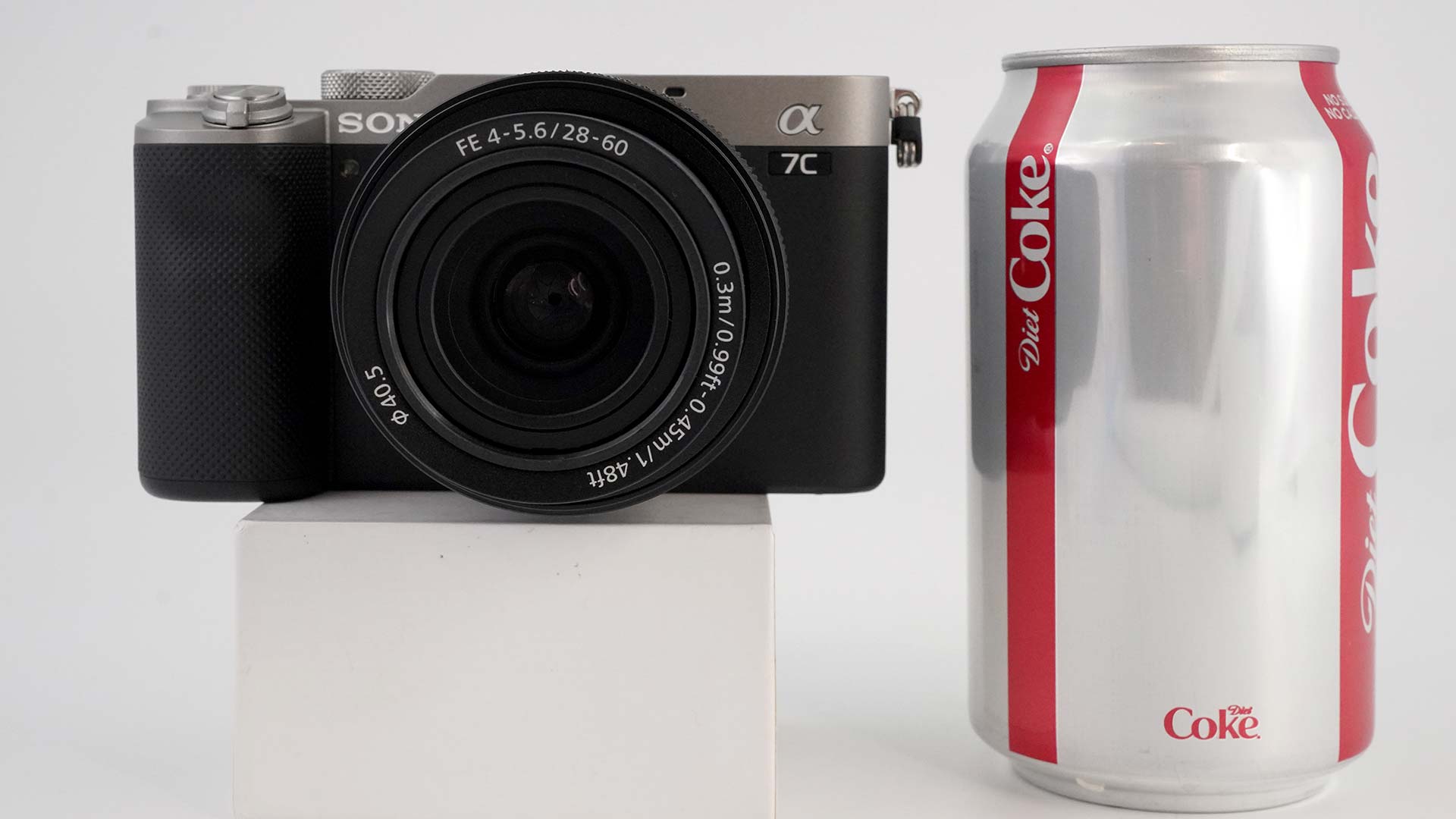
The Sony A7C is the smallest and lightest lens-swapping full-frame camera, making it a great alternative to a hefty full-frame DSLR — or even a larger mirrorless option such as the Sony A7 II or Nikon Z5 in this list. That size does come with a few drawbacks, mainly around the absence of certain controls you might expect on a nearly $2000 camera, but it does have a built-in viewfinder and we still found it to handle well in daily use. There’s certainly no doubts around its image quality: it shoots stellar 24MP stills and 4K video, though the latter is limited to 30 fps. Buy it in a kit with the similarly diminutive 28-60mm lens and you have a great option for traveling light.
Read our full Sony A7C review
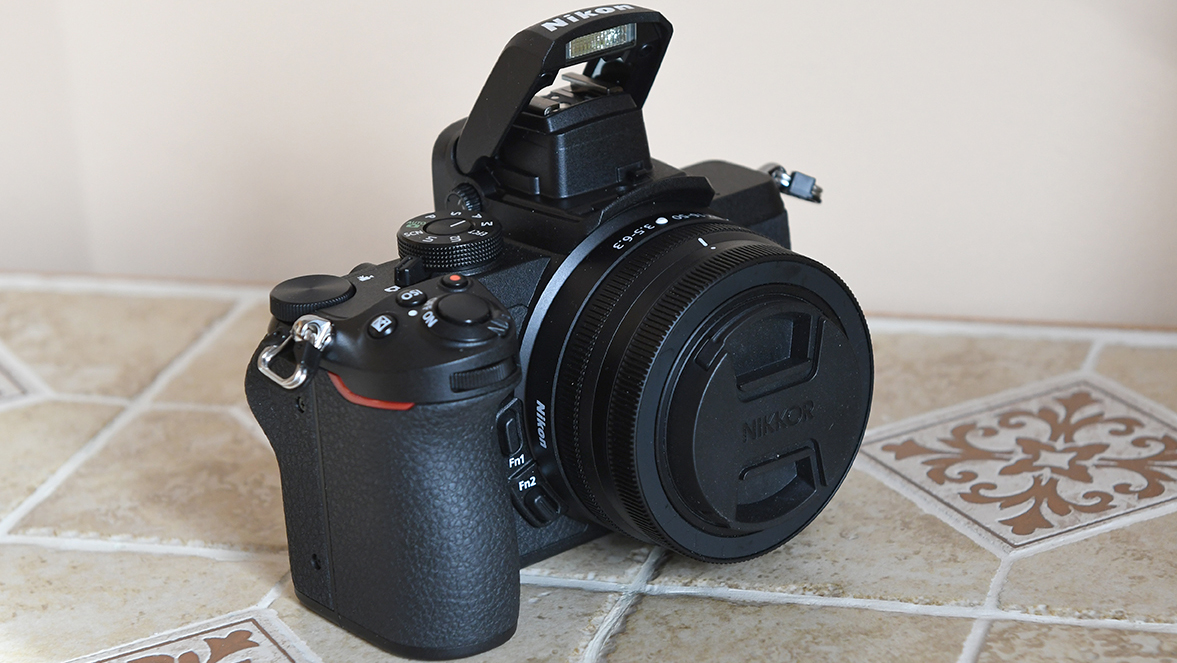
Nikon was a bit late to the mirrorless camera category, but it’s making up for lost time. Following the launch of the full-frame Z6 and Z7 mirrorless cameras, Nikon introduced the Z 50, which doesn’t have a full-frame sensor, but offers a solid feature set, great image quality and good performance — in a smaller form factor at a more consumer-friendly price.
The Nikon Z 50 is a great mirrorless camera for Nikon enthusiasts; we liked its build and deep, comfortable grip, as well as its sharp electronic viewfinder. Its 3.2-inch touchscreen flips down for selfies, but is obscured if you have the camera on a tripod. The Z 50 has intuitive controls, in-camera retouching, and good performance in low light. However, there’s no in-body image stabilization, and the single card slot only supports lower-end SD cards.
Read our full Nikon Z 50 review.
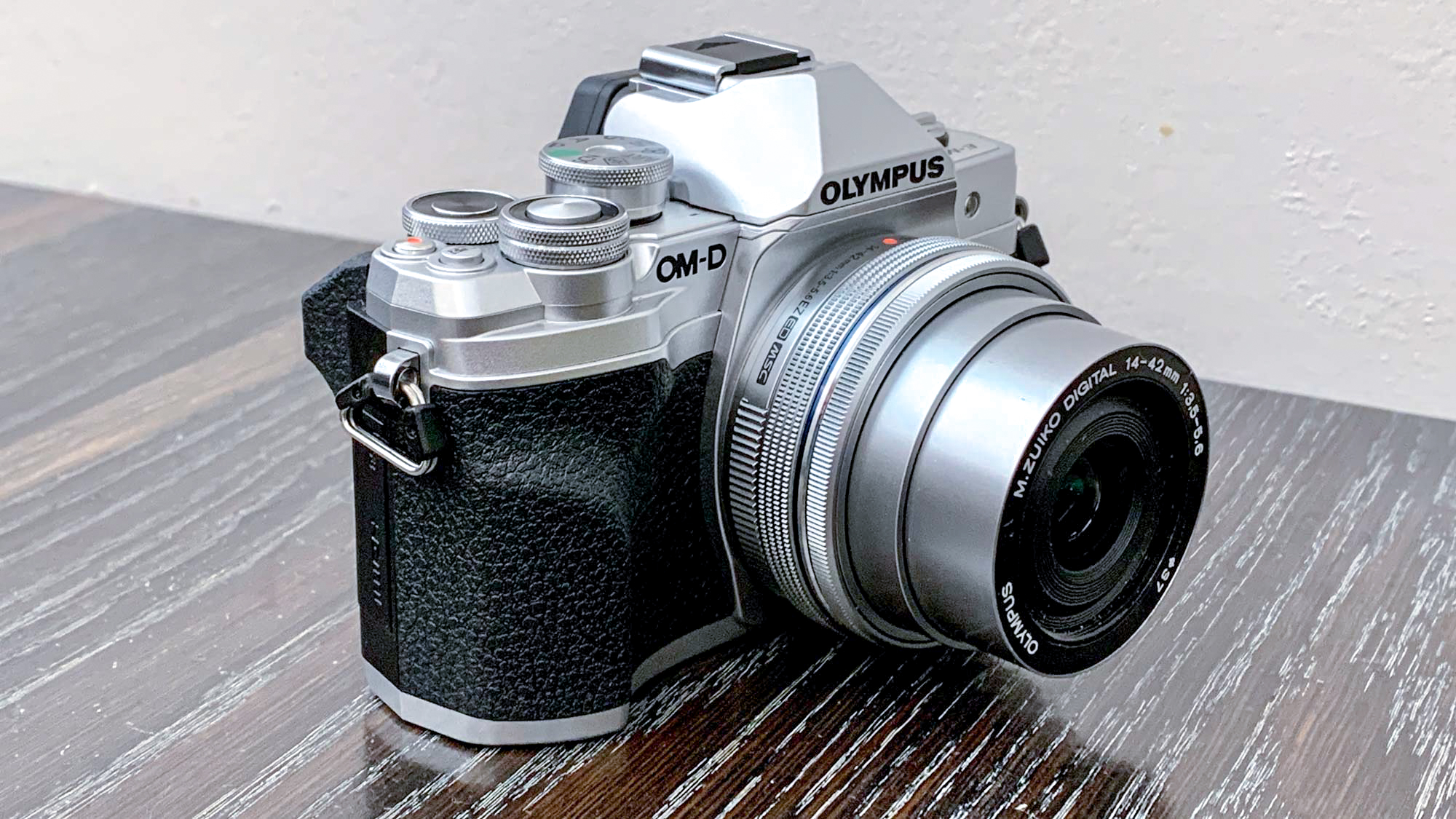
With excellent image quality, 5-axis in-body image stabilization, and a price well under $1,000, the Olympus OM-D EM-10 Mark IV provides a great entry point into the Olympus family. With its touch screen that rotates forward for selfie mode and 31 built-in image filters, the camera offers an easy upgrade from cellphone photography. And its compact design makes the Mark IV pretty easy to carry around.
But the Mark IV is not dumbed-down in any way. The bright OLED viewfinder offers a generous resolution of 2.36 million dots, and the camera also has a bright, colorful 3-inch LCD touchscreen with about a million dots of resolution. The screen tilts up about 90 degrees and down 180 degrees to face you when shooting selfies. Video (4K/30 fps) is good, but held back by the lack of a microphone jack.
In-body 5-axis image stabilization is the OM-D E-M10 IV’s standout feature. It’s not common in mirrorless cameras, and the capability is especially rare at this price.
Read our full Olympus OM-D EM-10 Mark IV review.
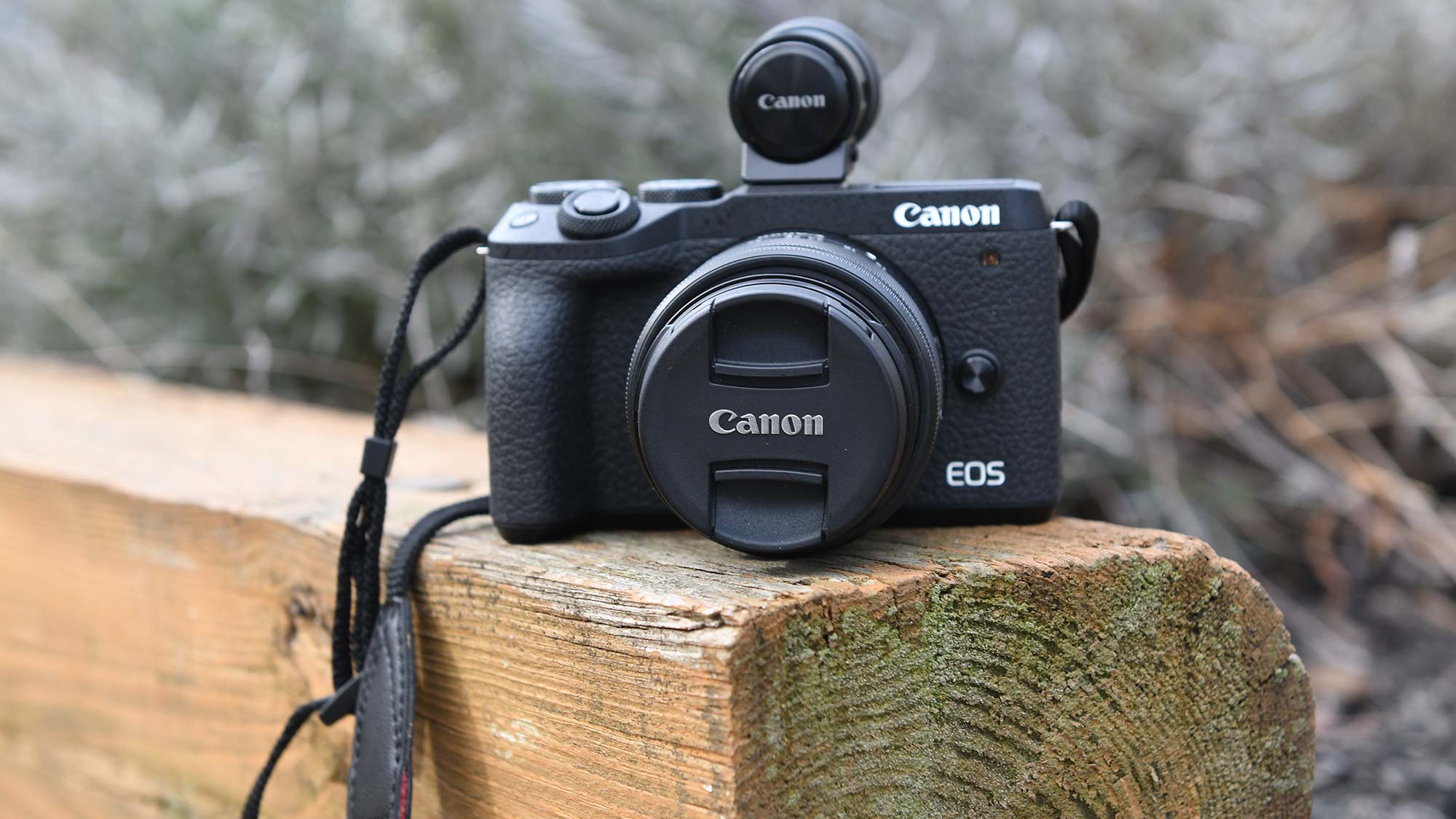
Canon’s second-generation EOS M6 Mark II mirrorless camera has a lot to like: It has a 32MP APS-C size sensor, the highest resolution in its class, and shares a number of features with the Canon EOS 90D, its DSLR sibling, such as the image processor, 4K video and Dual Pixel CMOS AF. And, it comes in a much more compact package, weighing in at 14.4 ounces with the battery.
However, Canon sacrificed a built-in viewfinder, and while the M6 Mark II has an excellent 3-inch touchscreen, you’ll want to purchase this camera as part of a kit, or be prepared to shell out an extra $200 for the optional electronic viewfinder that slides into the camera’s hot shoe. If you can live with this compromise, though, you’ll be rewarded with crisp photos and fast shooting speeds.
Read our full Canon EOS M6 Mark II review.
How to pick the best mirrorless camera for you
The criteria when shopping for a mirrorless camera are pretty much the same as when you’re looking for any sort of camera.
First, what is your budget? While our picks of the best mirrorless cameras all fall under $1,500, you can find models that are twice as expensive, and their features are very tempting.
Next, what is your experience level? If you’re new to mirrorless cameras or photography in general, it’s worth getting a lower-priced model with more beginner-friendly features, such as in-camera guides that explain various settings.
Last, consider what you want to do with the camera. If you’re shooting sports or wildlife, you’ll want a camera that can take a lot of pictures quickly, as well as one with in-camera stabilization. And, while mirrorless cameras are known for their smaller size relative to DSLRs, you’ll want one that’s more compact if you’re planning to take it traveling.
How we test mirrorless cameras
To determine which models make our list of the best mirrorless cameras, we first put each through a battery of tests, and evaluate them for such things as image and video quality, battery life, design, and usability. How fast can the camera shoot? Is its autofocus quick to lock on to subjects in the frame? When recording video, does it use the full sensor, and at what resolution can it record?
We also look at things such as button placement, how easy it is to navigate in-camera menus, if its touchscreen can fold outwards, and if you can access all the camera’s settings using the display.
Finally, we consider such things as what features the camera has, and what competitors are offering in cameras that cost around the same price.
How to choose a lens for your mirrorless camera
One of the most important qualities that mirrorless and DSLRs share is that they accept interchangeable lenses, which can dramatically improve image quality and bring your photography to a new level. But there are scores of lenses to choose from, which can be confusing. To help you get better acquainted with this important camera accessory, here’s a quick rundown of types of interchangeable lenses that are available for your mirrorless camera:
Standard zoom lenses: This is the lens that most people who buy an entry-level DSLR or mirrorless model as a kit use first. Mirrorless kits generally come with a 14-42mm lens. They typically include a small amount of zoom (3x), and are often inexpensive, but not the highest quality. However, in the past several years, the quality of these kit lenses has improved.
Prime lenses: You can save money by choosing a prime or non-zoom lens. They offer excellent quality, and are often much more affordable. If you need to zoom, just use your feet and walk closer to your subject!
Telephoto zoom lenses: If you shoot a lot of sports or other types of events, consider these powerful zooms, which can bring you closer to the action and provide features to capture images with shallow depth-of-field. They can be a bit heavy and bulky, but most manufacturers have been inventing new lenses that are smaller and more compact, but are still high quality. The 70mm-200mm is a good example of this type of lens.
Wide-angle lenses: If you’re traveling, this type of lens, such as a 16-35mm zoom, can be very valuable, since it allows you to capture different types of wide-angle shots. Want to shoot a group portrait? Set the zoom lens towards the 35mm end of the range, which will avoid distortion at the edges of the image. Or if you want to capture a broad, sweeping landscape, use the lower end of the zoom, nearer to the 16mm end. However, these lenses can be pricey.
Macro or Close-up lenses: If you’re looking to capture close-up shots of small objects, you’ll want a good quality macro lens, which come in a variety of focal lengths, such as 50mm and 100mm. Be sure to do your research so you know that the lens you want has macro capabilities.
Specialty lenses: One of the most notable specialty lenses in this category is the ultra-wide fisheye lens, which some photographers love for the exceptionally distorted point of view. Other types include tilt-shift and soft-focus lenses.
Be sure to check out all of our camera picks:
Best cameras | Best DSLR cameras | Best action cameras | Best waterproof cameras | Best point-and-shoot cameras | Best instant cameras | Best cheap cameras | Best GoPro camera | Best GoPro accessories | Best drones | Best 360 cameras | Best iPhone lenses | Best iPhone tripods |DSLR vs. mirrorless | Best Nikon accessories | Best Sony a6000 accessories
The best apps and software for editing, managing, and sharing your photos:
Best photo organizer apps | Best photo storage sites | Best photo editing software | Best photo editing apps | Best photo collage apps
For all the latest Technology News Click Here
For the latest news and updates, follow us on Google News.
